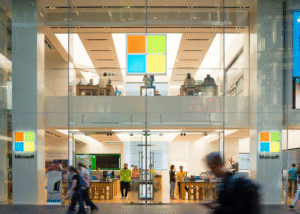A New Chapter for Rail Travel
Imagine this: you’re on a train zooming from Birmingham to Manchester. It’s not the speediest train you’ve ever ridden, but it’s reliable and gets you where you need to go comfortably. That’s what we’re talking about with the new rail plan, which is a bit of a twist on the original High Speed 2 (HS2) project.
Once upon a time, the idea of High Speed 2 was to have super-fast trains zipping between Birmingham and Manchester at breakneck speeds. But then, there was a hiccup in the plans. Rishi Sunak, the then-Prime Minister, decided to cancel the Birmingham to Manchester stretch of HS2. It was a big move that disappointed many people who were looking forward to a super-speedy trip.

The Speed Dilemma
You might wonder, does it matter if trains go a bit slower? Let’s think about it. In Kent, trains from places like Dover, Folkestone, and Canterbury to London travel at 140 mph. That’s pretty fast, but not as speedy as the Eurostar, which zooms at 186 mph on the same tracks. Do people in Kent mind this? Probably not. They get to London reliably and quickly enough, and that’s what matters.
Trains on the Southeastern routes are quick enough for everyday use. They have dedicated tracks and improved services, making travel smoother. Even though the trains aren’t as fast as the Eurostar, they help make local train journeys more dependable and free up space for other trains and freight.
The Return of HS2?
The original HS2 project was supposed to be a game-changer. However, the cancellation of the Birmingham to Manchester part left many scratching their heads. The former Prime Minister’s decision to halt HS2 was meant to save money and redirect it to other transport improvements. This plan, called “Network North,” included projects in places like Kent and Devon.
But now, mayors from Greater Manchester and the West Midlands want to bring back a version of HS2. This new plan, which we’ll call Quite High Speed 2 (QHS2), is like a toned-down version of the original. It wouldn’t be as fast as originally planned, but it would still connect cities and improve the rail network.
What is QHS2?
QHS2 isn’t the full-speed, high-tech train line that HS2 promised. Instead, it’s a more affordable option that would still make a big difference. It aims to reduce congestion on existing tracks and provide a quicker way to travel between cities. For instance, the trains would travel at speeds lower than the original HS2 plan but still faster than regular trains.
Currently, trains between Birmingham and Manchester are crowded and slow due to shared tracks with freight and regional trains. With QHS2, the new line would take some of the pressure off these busy routes. This would lead to quicker and more reliable journeys, even if they are not as speedy as initially planned.
Why QHS2 Makes Sense
Transportation expert Thomas Ableman explains that HS2 was meant to boost the economy by improving connections between different regions. It was about making travel faster and more efficient, which would help balance the economic differences between London and other parts of the country.
QHS2 aims to achieve similar goals but without the enormous costs of the original HS2 plan. The focus is on creating more capacity and better connections rather than just higher speeds. This approach is about making the most of what we have and ensuring that the rail network works well for everyone.
The Upside of QHS2
Even though QHS2 won’t be as fast as HS2 was supposed to be, it has several advantages. First, it’s more affordable and practical. The goal is to improve the current rail system and make travel between cities easier. Faster trains are great, but reliable and efficient trains are even better.

Second, QHS2 will help reduce congestion on existing tracks. This means trains won’t have to compete for space with freight and regional services. It will also make local travel more predictable and less stressful for commuters.
High Speed-ish 2 might not be the high-speed rail project everyone was dreaming of, but it’s a step in the right direction. It promises to make train travel between Birmingham and Manchester quicker and more reliable, even if it’s not the lightning-fast ride originally planned.
So, next time you hear about rail projects and speed records, remember that sometimes a slightly slower but smarter solution can be just as effective. QHS2 might not break any speed records, but it’s set to make a real difference in how we travel.











